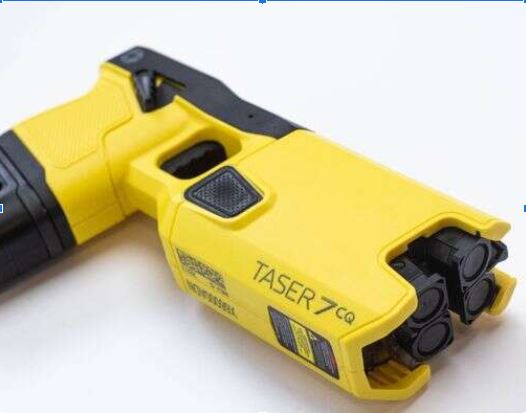Disclaimer: While this article provides information about tasers, it is essential to consult local laws and regulations before purchasing or using one. Tasers are intended for self-defense but should always be used responsibly and with caution.
As a seasoned self-defense expert with years of experience in personal safety and security protocols, I’ve dedicated my career to exploring the most effective and reliable tools for personal protection. In today’s world, where safety concerns are paramount, many people are turning to non-lethal options for self-defense. One such option that has gained significant attention is the taser. But is a taser truly an effective and safe choice for personal protection? Let’s delve into the details.
Key Highlights
- Tasers offer a non-lethal self-defense option but their effectiveness and safety depend on various factors including the target, distance, and user training.
- While tasers can incapacitate an attacker, they are not guaranteed to work in every situation, and improper use can lead to injuries.
- It’s crucial to understand local laws, consider alternatives like situational awareness and self-defense classes, and prioritize prevention to enhance personal safety.
Image Credit Goes to Self Defense Mall
Understanding Tasers
A taser, or conducted electrical weapon (CEW), is a device designed to incapacitate a person through the delivery of an electrical shock. It typically consists of a handheld unit and two probes connected by wires. When fired, the probes embed themselves in the target, delivering a high-voltage, low-amperage electrical current that disrupts the nervous system, causing temporary muscle contractions and incapacitation. If you’re considering personal safety or self-defense options, you can buy a taser gun online to explore various models and features that best suit your needs.
The Appeal of Tasers
The attraction of tasers lies in their potential to subdue an attacker without causing fatal injuries. Unlike firearms, tasers offer a less-lethal option for self-defense. This is particularly appealing to individuals who have concerns about using deadly force or those who live in areas with strict firearm regulations.
Effectiveness of Tasers
While tasers can be effective in certain situations, it’s essential to understand their limitations. Factors such as the target’s size, clothing, and physical condition can influence the effectiveness of a taser. Additionally, the target must be within a specific range for the probes to connect successfully.
Studies have shown that tasers can be highly effective in stopping an attack when used correctly. However, there’s no guarantee that a taser will incapacitate an attacker immediately. Some individuals may be resistant to the effects of the shock, and adrenaline can temporarily mask the pain.
Safety Considerations
Tasers are generally considered safe when used as directed. However, like any self-defense tool, there are risks involved. Improper use or accidental discharge can result in injuries to the user or bystanders. It’s crucial to follow the manufacturer’s instructions carefully and undergo proper training if available.
Some potential side effects of taser exposure include muscle pain, burns, and temporary loss of balance. In rare cases, more severe complications may occur, such as cardiac arrhythmias or seizures.
Legal Implications
The legality of owning and using a taser varies by jurisdiction. It’s essential to research and comply with local laws and regulations. Using a taser in self-defense may still require you to justify your actions to law enforcement.
Choosing the Right Taser
If you decide to purchase a taser as your self defense tool, several factors should be considered:
- Range: Consider the effective range of the taser and ensure it suits your needs.
- Power: The voltage output of the taser can vary. Research the appropriate level of power for your self-defense requirements.
- Size and weight: Choose a taser that is comfortable and easy to carry.
- Safety features: Look for tasers with safety features such as built-in lasers, safety switches, and training cartridges.
Training and Practice
Proper training is essential for maximizing the effectiveness and safety of a taser. Consider taking a self-defense course that includes taser training. Regular practice can help you develop muscle memory and improve your reaction time in a stressful situation.
Alternatives to Tasers
While tasers can be a valuable tool for self-defense, it’s essential to consider other options as well. These may include:
- Situational awareness: Being aware of your surroundings and potential threats can help you avoid dangerous situations altogether.
- Personal alarms: A loud personal alarm can deter an attacker and attract attention.
- Pepper spray: Pepper spray is a non-lethal option that can incapacitate an attacker temporarily.
- Self-defense classes: Learning self-defense techniques can empower you to protect yourself physically.
Conclusion
Tasers can be an effective tool for self-defense when used correctly and responsibly. However, they are not a foolproof solution. It’s essential to weigh the pros and cons carefully and consider your individual needs and circumstances before making a decision. Remember, the best form of self-defense is prevention. By staying informed, practicing situational awareness, and taking appropriate precautions, you can significantly reduce your risk of becoming a victim of crime.
